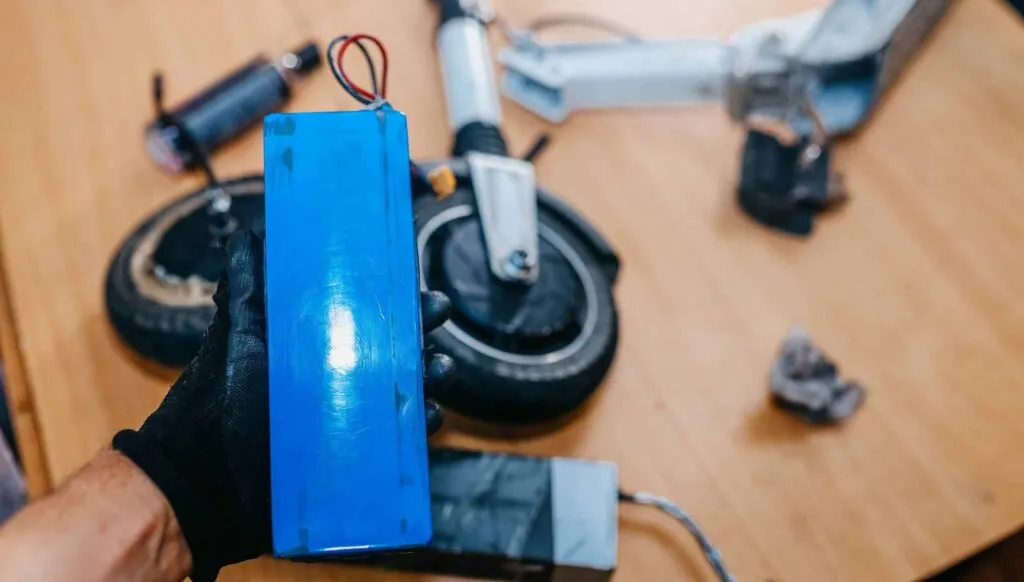The Ninebot G30D2 electric scooter is known for its sleek design and robust performance, but it’s the battery that powers it to deliver exceptional range, speed, and reliability. For those looking to learn more about the heart of this electric scooter, understanding the battery is essential. This article will explore everything there is to know about the G30D2 Ninebot battery, from its specifications to its performance, safety features, and maintenance tips to ensure it lasts as long as possible.
Introduction to the Ninebot G30D2 Battery
Electric scooters have become a popular choice for urban commuting, and the Ninebot G30D2 stands out in the market. Its battery plays a crucial role in determining how far and fast the scooter can go, as well as how long it will last over time. The G30D2 Ninebot battery is one of the most important components, offering a combination of power, efficiency, and safety features to enhance the overall scooter experience.
Battery Specifications of the G30D2 Ninebot
2.1. Voltage and Capacity
The G30D2 Ninebot scooter features a 36V lithium-ion battery with a capacity of 10.5Ah. This combination allows the scooter to deliver a powerful and efficient ride. Lithium-ion batteries are known for their high energy density, lightweight design, and longer lifespan compared to other battery types like lead-acid.
2.2. Range and Distance
One of the standout features of the G30D2 Ninebot battery is its impressive range. On a full charge, the scooter can cover up to 40 miles (64 kilometers), depending on several factors such as the rider’s weight, terrain, and riding mode. This range is ideal for commuting, leisurely rides, or running errands around the city.
2.3. Charging Time
The G30D2 battery is designed to be efficient when it comes to charging. A full charge typically takes around 6 hours. This relatively quick charging time makes it possible to charge the battery overnight or during the day while you are at work or school.
Performance and Efficiency of the G30D2 Battery
3.1. Speed and Power
The G30D2 Ninebot scooter can reach speeds of up to 15.5 mph (25 km/h). The battery provides a consistent power output to support these speeds, ensuring smooth acceleration and efficiency. This performance is perfect for urban environments where navigating through traffic at moderate speeds is key.
3.2. Regenerative Braking System
An interesting feature of the G30D2 is its regenerative braking system, which not only helps slow the scooter down but also recovers energy to recharge the battery during braking. This feature contributes to the overall efficiency of the scooter, helping preserve battery life during use.
3.3. Impact of Terrain on Performance
While the G30D2 Ninebot battery is capable of powering the scooter across a variety of terrains, it is important to consider how terrain impacts performance. Uphill climbs or rough surfaces may reduce the scooter’s range and speed due to higher power consumption. On flat surfaces or smooth roads, however, the battery performs at its best, delivering maximum efficiency.
Safety Features of the G30D2 Ninebot Battery
4.1. Battery Management System (BMS)
The Battery Management System (BMS) is an advanced feature integrated into the G30D2 Ninebot battery. The BMS regulates the battery’s charging and discharging processes to ensure safe and efficient operation. It also protects the battery from common issues such as overcharging, overcurrent, and overheating, all of which can negatively impact the battery’s lifespan.
4.2. Overcharging and Overcurrent Protection
The BMS automatically stops charging once the battery reaches full capacity, preventing overcharging. This helps to avoid potential risks such as battery swelling or reduced performance. Additionally, the BMS protects the battery from excessive current flow, which could cause overheating or damage to the battery’s internal components.
4.3. Temperature Regulation
Temperature regulation is another key safety feature. The G30D2 battery monitors its temperature during both charging and discharging. If the battery detects that it is becoming too hot, the system automatically reduces power output or halts charging until the temperature returns to a safe level. This helps to prevent thermal runaway and other temperature-related issues that could compromise safety.
Extending the Life of Your G30D2 Ninebot Battery
5.1. Best Charging Practices
Lithium-ion batteries perform best when kept between 20% and 80% charge. Fully discharging the battery before charging can also lead to faster wear and tear, so it’s better to top up the battery regularly rather than allowing it to go completely flat.
5.2. Avoid Extreme Temperatures
Extreme temperatures, both hot and cold, can reduce the lifespan of your battery. The G30D2 Ninebot scooter should preferably be stored in a shaded and well ventilated area with low temperatures ranging from lows of 60 degrees Fahrenheit and highs of 78 degrees Fahrenheit. It is recommended to charge the battery when it is still at room temperature to get the most of it.
5.3. Regular Charging
Even if you’re not using the scooter, it’s advisable to charge the battery at least once every few weeks. Leaving the battery completely discharged for extended periods can cause it to lose its ability to hold a charge efficiently. Regular charging helps keep the battery healthy and ready for use when needed.
Signs That Your G30D2 Battery Needs Replacing

6.1. Reduced Range
One of the first signs that your Ninebot G30D2 battery may need replacing is a noticeable reduction in range. Over time, as the battery ages, its capacity decreases, which means it won’t hold as much charge as it did when new. If you notice a significant drop in how far you can ride on a single charge, it may be time to consider a replacement.
6.2. Slow Charging Times
If the charging time begins to increase significantly, this can be a sign that the battery is no longer holding charge as efficiently as it once did. While charging time can vary slightly depending on environmental factors, a large increase in charging time could indicate that the battery is beginning to deteriorate.
6.3. Charging Issues
Another sign of a failing battery is if it struggles to charge or doesn’t hold a charge at all. If your battery is showing erratic charging behavior, it’s worth inspecting it for damage or considering a replacement.
Also Read: Onemana Battery
Replacing the G30D2 Ninebot Battery
7.1. Genuine Replacement Parts
If it becomes necessary to replace your G30D2 Ninebot battery, always opt for a genuine Ninebot replacement battery. Using third-party or incompatible batteries may compromise the scooter’s performance and safety. Genuine parts are designed to ensure optimal compatibility and performance with the Ninebot G30D2.
7.2. DIY Battery Replacement vs. Professional Service
Replacing the battery is a fairly straightforward process for someone with technical know-how, but if you’re unsure, it’s recommended to have it replaced by a professional service. Improper installation of the battery could lead to damage or void the scooter’s warranty.
Conclusion
The G30D2 Ninebot battery is a critical component that provides power, efficiency, and reliability for your electric scooter. With its long range, fast charging time, and advanced safety features, it ensures an enjoyable and smooth ride for urban commuters and leisure riders alike. By understanding the specifications, maintenance, and care required for the battery, you can enjoy maximum performance and extend its life for years to come.
Whether you’re using the Ninebot G30D2 for daily commutes or recreational rides, its powerful 36V lithium-ion battery ensures you can travel long distances while maintaining a high level of performance. With proper care and attention, your Ninebot G30D2 scooter and its battery will continue to deliver an efficient, reliable, and safe riding experience.



